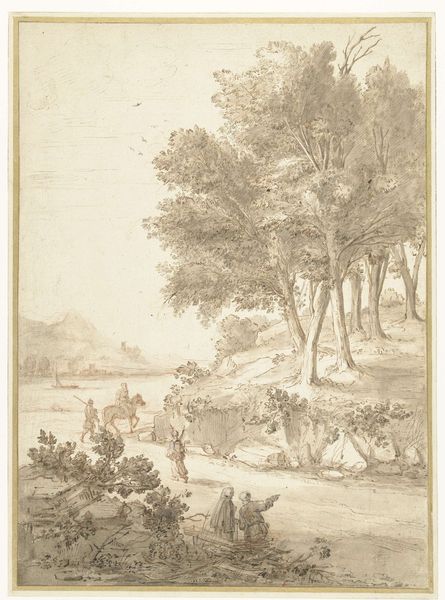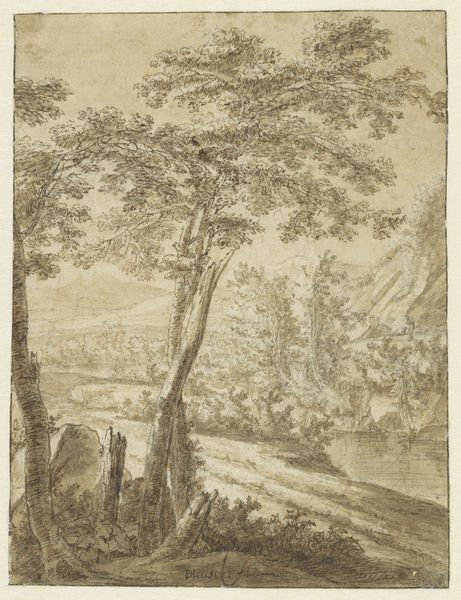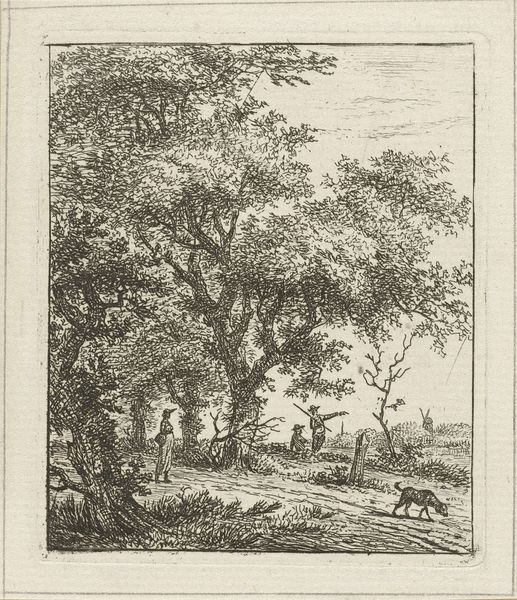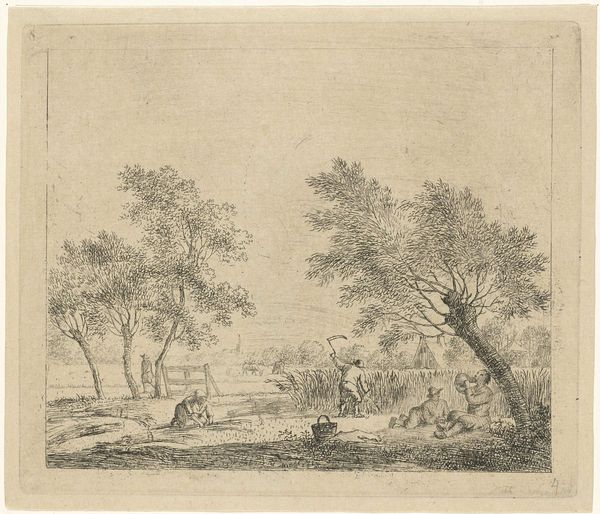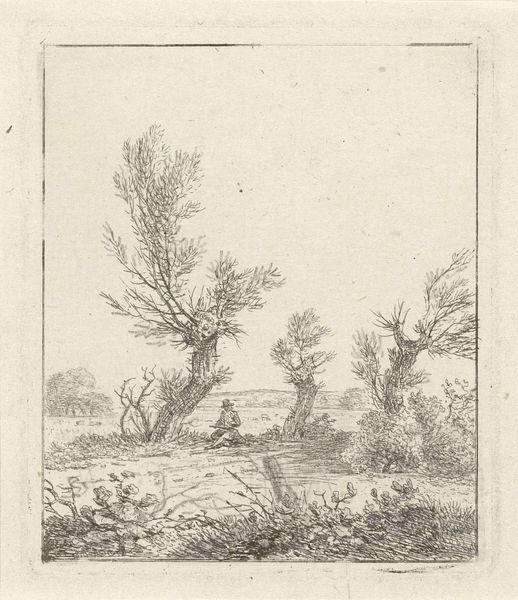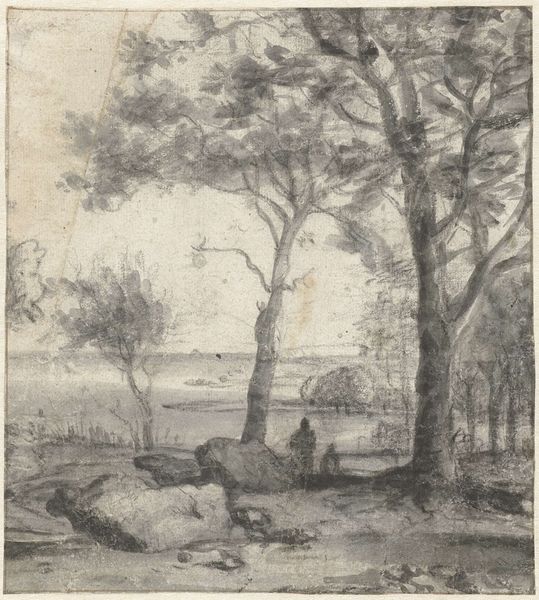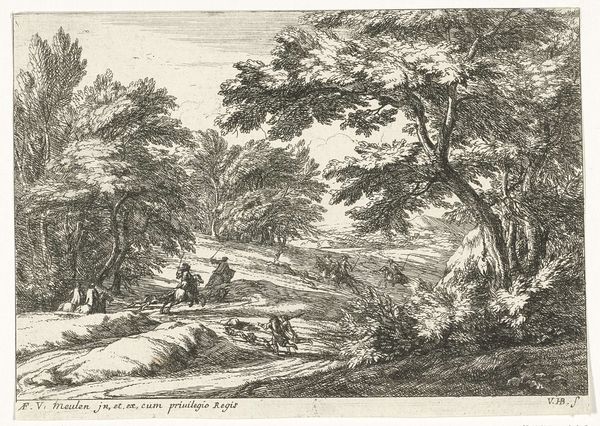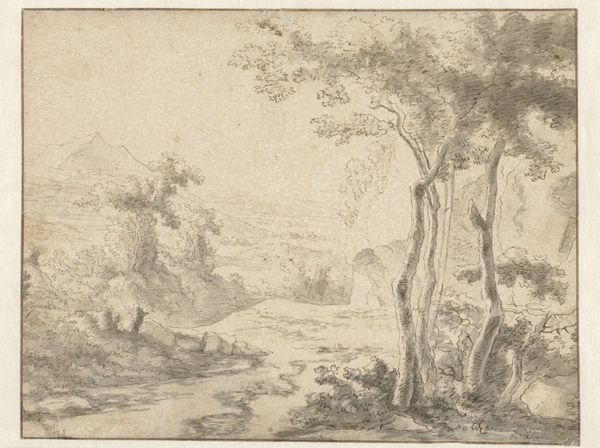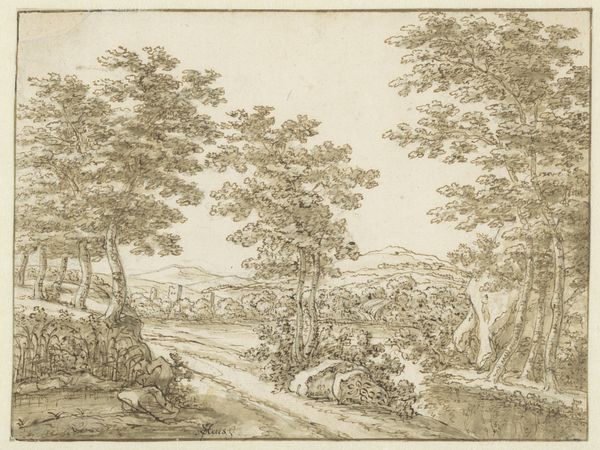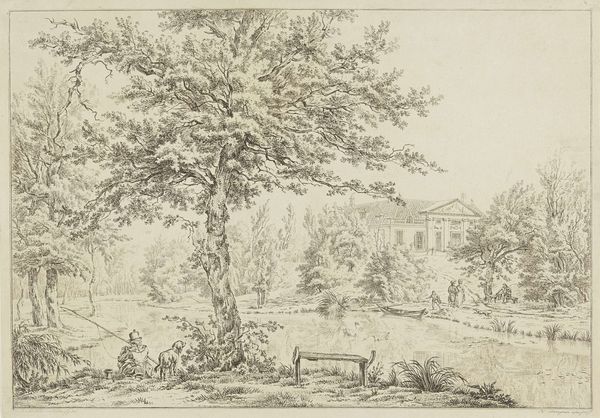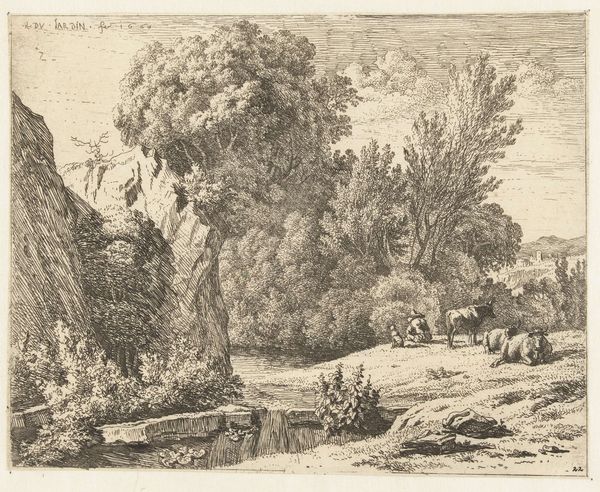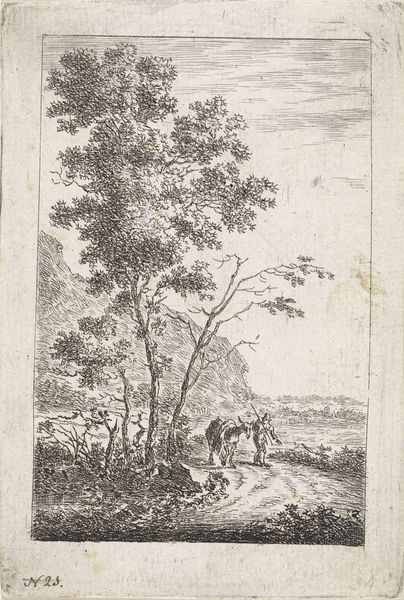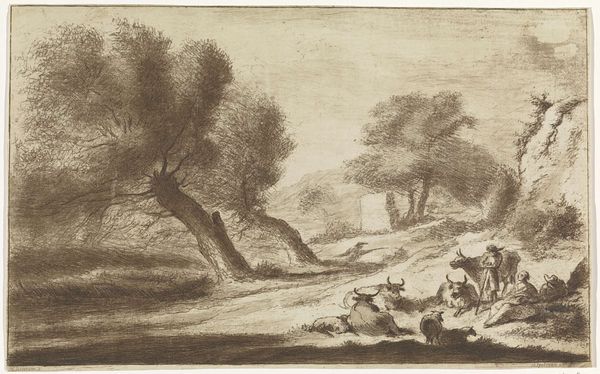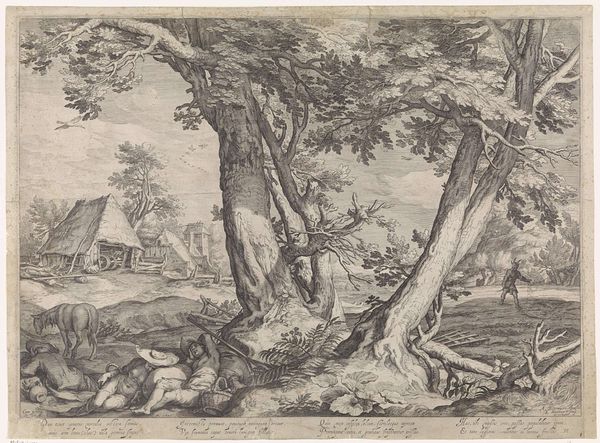
drawing, ink, pencil
drawing
baroque
dutch-golden-age
landscape
figuration
ink
pencil
genre-painting
watercolor
Dimensions: height 234 mm, width 189 mm
Copyright: Rijks Museum: Open Domain
Curator: This is Adriaen van de Velde's "Landschap met op de voorgrond een liefdespaar," a drawing from between 1646 and 1672. The medium appears to be ink and pencil, perhaps even a watercolor wash. Editor: It feels light, almost breezy. The composition leads my eye directly to that central tree, and then down to the figures in the foreground. What a wonderfully intimate scene amidst this grand landscape. Curator: Precisely. The drawing offers a fascinating look at the art market of the Dutch Golden Age. Landscape drawings such as these weren't simply sketches for paintings. They were saleable commodities in their own right. Note how carefully Velde has composed the landscape—layering planes to create depth and a sense of place for his consuming audience. Editor: It is so compelling. What intrigues me is the semiotic relationship between the figures and nature. The slightly tilted tree feels sympathetic to the lounging figures—almost echoing their relaxation. But that scene almost feels separate, private, like the main event in this large landscape. Curator: Indeed, consider the economic realities. Velde may have been fulfilling specific commissions or catering to market demands. This romantic interlude is less about idealized love and more about the material conditions that allowed for such leisure to be depicted and enjoyed. Dutch wealth, gained through trade, made this art possible and appealing to its consumers. We see in this drawing the tangible realities of land use, property, and leisure facilitated by Dutch economic power. Editor: A stark but true consideration! However, I can’t help but see how Van de Velde, through the delicate layering of tones and precise lines, crafted not just a landscape, but an idyll. The landscape’s composition draws one’s attention across a sequence of interconnected moments between the various planes: the tree to figures, foreground to the distant landscape—forming this unified scene. Curator: It's crucial to view these aesthetic choices in context of the historical value and accessibility of materials like high quality paper and specialized drawing instruments. Such works underscore how Dutch artists responded to market dynamics while influencing artistic trends. Editor: Looking closely I am struck again by its harmony. Its subdued tone provides a calm conclusion to the work; quite simply, "Landschap met op de voorgrond een liefdespaar," at the Rijksmuseum is wonderfully executed. Curator: And wonderfully insightful for understanding how art functioned within 17th-century Dutch society, influencing both the artistic and economic landscape.
Comments
No comments
Be the first to comment and join the conversation on the ultimate creative platform.
